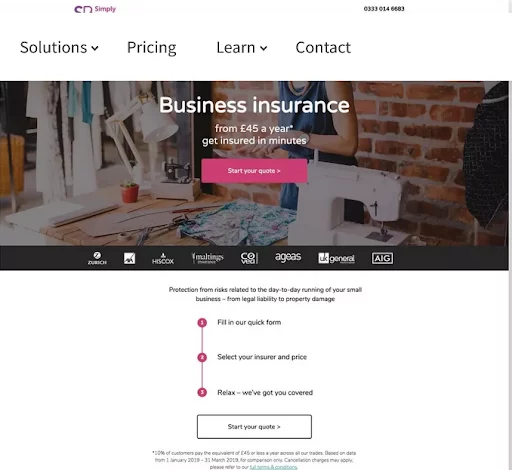You would only invite a few people to your house and then not provide them with anything to eat or drink, would you? The same holds for your website or social media pages; you want to make it so that users feel welcome to explore and interact with your brand.
A successful marketing campaign is like throwing a party; the atmosphere is everything. If you want your visitors to feel welcome and enthusiastic about joining your brand’s community, you must make their time spent on your site as pleasant as possible. Both sales and customer loyalty will increase as a result of this strategy.
Now that we live in a digital age, shoppers can pick and choose from an unprecedented variety of products. If you want your business to succeed in today’s market, conversion marketing is where it’s at. Making it simple for potential customers to choose your company over the competition is the goal of optimizing your website, social media, and online presence.
Concept of Conversion Marketing
Conversion marketing is the process of converting casual browsers and social media followers into paying customers. It’s crucial to cultivate a setting that stimulates interest and motivates participation. With the average ecommerce conversion rate between 1.84%-3.71%, improving your rate by as little as a half percentage point can be a massive win for an online business.
You would only invite a few people to your house and then not provide them with anything to eat or drink, would you? The same holds for your website or social media pages; you want to make it so that users feel welcome to explore and interact with your brand.
A successful marketing campaign is like throwing a party; the atmosphere is everything. If you want your visitors to feel welcome and enthusiastic about joining your brand’s community, you must make their time spent on your site as pleasant as possible. Both sales and customer loyalty will increase as a result of this strategy.
Now that we live in a digital age, shoppers can pick and choose from an unprecedented variety of products. If you want your business to succeed in today’s market, conversion marketing is where it’s at. Making it simple for potential customers to choose your company over the competition is the goal of optimizing your website, social media, and online presence.
Stages of Conversion Marketing
- Awareness: Only if a person is aware of a company’s operations or is interested in its goods or services would they visit its website. This might be accomplished by using compelling banners or advertising that draws attention to your website and display it at the top of search results.
- Education: Long-term website visitors vacillate between becoming enthralled and taking decisive action. Before they become full-fledged consumers, they may still need to be completely sold on the concept and require more information. A wonderful way to further educate your website visitors is with pertinent content spread throughout the site, such as blogs or guides.
- Conversion: Conversion is the ultimate objective for every marketer since it turns visitors into qualified leads or clients. Consumers at the deciding stage of the conversion funnel are also in the last step of conversion. One technique to encourage your prospects to take action is placing call-to-action (CTA) buttons.
Where Should Conversion Marketing Strategies Be Used?
1. Homepage
Homepages are prime candidates for CRO. In addition to making a first impression on visitors, the homepage is also an opportunity to retain those visitors and guide them further into your website. You can do this by emphasizing links to product information, offering a free signup button, or even incorporating a chatbot that solicits questions from visitors at any point during their browsing experience.
2. Pricing Page
The pricing page of a website is often the deciding factor in whether or not a visitor will continue exploring the site. Optimization for conversion (CRO) can increase sales from a pricing page by making changes to the pricing intervals (such as price-per-year vs. price-per-month), describing the features of the product for each price point, providing a phone number to call for a price quote, or adding a simple popup form. For instance, just three weeks after implementing an introductory email opt-in popup form on its pricing page, Hotjar attracted over 400 new leads.
3. Blog Page
For any website, a blog represents an extraordinary window of opportunity for generating new customers. To generate leads, a blog should publish valuable and well-thought-out content related to the industry.
Calls to action (CTAs) can be placed strategically throughout an article, or readers can be encouraged to submit their email addresses in exchange for a free ebook or industry report.
4. Landing Pages
Landing pages naturally have the highest conversion rate of all signup forms, at 23% on average, because they are created to elicit a specific action from visitors.
A video from the previous year’s event played on the landing page could convince viewers to sign up for this year’s event. When optimizing a landing page to promote the download of a free resource, it’s helpful to include sample content from the resource itself.
Check out some examples of high converting landing pages.
Best Practices to Improve Conversion Rate
-
Set your goals
Think about the end goal before boosting your website’s conversion rate. You’re here, so you must be interested in improving conversion rates and expanding your business; the question is, how? We can break online shopping down into five main conversion aims by looking at the following:
- To learn more about what makes customers tick
- For more straightforward site navigation and more sales during sales periods
- To amass more potential candidates
- To get a better ROI from their advertising dollars (ROAS)

-
Analyze your existing customer journeys
Examining the customer’s journey in detail is essential to increasing your sales. You must dig deeper into your customer data and conversion metrics to know where your customers are making purchases (and where they aren’t). Once you have data on customer behavior on your site, you can make educated guesses about how to boost conversions.
Google Analytics by giving you a 360-degree perspective on your customer’s journey, allowing you to:
- Learn the user’s click-through patterns and look for cyclic actions
- Track down the most bouncy pages
- Find the best avenues for conversion
- Liberate 80% more information than Google Analytics
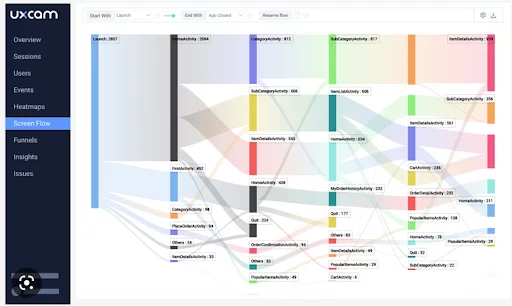
-
Use social proof
Because of our deep-seated need to feel accepted by our peers, social proof can be an extremely effective conversion marketing strategy. It’s human nature to want to fit in with our friends, peers, and role models, which is why we often buy the same trendy brands and cutting-edge technologies that they do.
- E-commerce marketers who want to boost conversion rates often use social proof as a tried-and-true strategy.
- Verify that your business is genuinely interested in your client’s needs
- Prompt haste
- Emphasize the limited availability of products
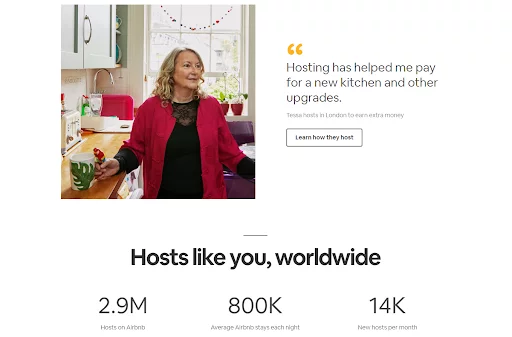
-
Improve user navigation
KoMarketing found that 37% of consumers would abandon a site due to poor navigation. Website conversion rates always take a hit if customers need help navigating an online store.
Website experiences that aid shoppers in locating the products they seek can be created and embedded to make a site more user-friendly and increase the likelihood of a purchase being made. You could, for instance:
- Send shoppers who have already shopped their basket reminders
- Lead customers to the appropriate product categories
- Display products that have been recently viewed
- It would be helpful if you could suggest items to customers based on their past purchases.
- Increase the average order value and the number of conversions by pointing customers toward complementary products.
-
Embed USP banners
The key to success in a crowded market is to establish your company’s unique value over that of the competition. You should feature your USPs in embedded site banners because they will convince customers to buy from you rather than your rivals. USP banners improve conversion rates in the short term and in the long run by streamlining the user journey and increasing customer loyalty.
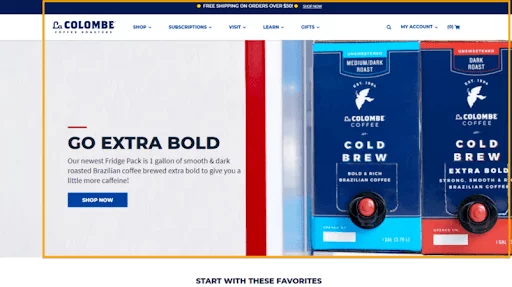
-
Leverage customer testimonials
Testimonials from satisfied customers effectively gain trust and generate business.72% of consumers say that positive testimonials increase their confidence in a business after reading them, as reported by Big Commerce. Potential customers are more likely to believe positive comments made by verified users of your product than those made by you or your company.
-
Deploy countdown timers
Regular site visitors are much more likely to purchase one-time visitors. But how can you instill a sense of urgency and motivate them to buy right now rather than later?
Whichtestwon found that using a countdown timer can boost sales by an average of 9 percent, so they’re an excellent place to begin.
Timer widgets can call attention to the last order time for next-day shipping, and it’s essential to draw attention to the closing date of your sale. Promote the expiration date of a coupon and encourage customers to act quickly. Countdown timers are helpful for any website, from the home page to the cart. They’re also a terrific method for boosting email marketing conversion rates.
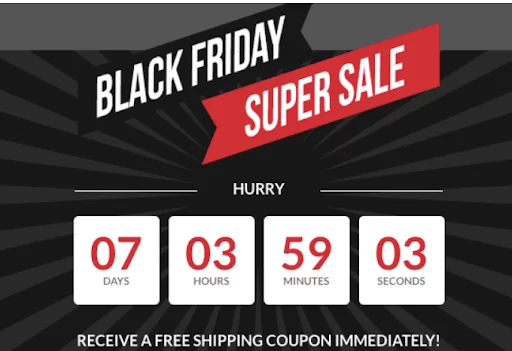
-
Reduce browse abandonment
The high shopping cart abandonment rate is a major challenge for online merchants. Data from Zenreach shows that once a first-time visitor leaves your site, they are doubtful to return.
Actionable campaigns in response to exit intent behaviors, such as
- If the user does not interact with the system for a certain amount of time,
- Anytime a user hovers over the navigation bar,
- Any time a user navigates between tabs,
- Copying the product name and pasting it into a new tab
-
Tackle cart abandonment
When a customer puts an item in their shopping cart, you know they’re seriously considering purchasing, but that doesn’t mean they will. Indeed, across all sectors, the average abandonment rate of shopping carts is 70%, mirroring the average abandonment rate of browsing sessions. The goal of any e-commerce conversion marketing strategy should be to get customers to complete their purchases immediately rather than later.
- Send urgent messages
- Give out coupon codes
- Promotion of Interest-Free Payment Plans
- Integrate credibility markers, such as money-back guarantees, to bolster customer trust.
- Start “welcome-back” advertising campaigns
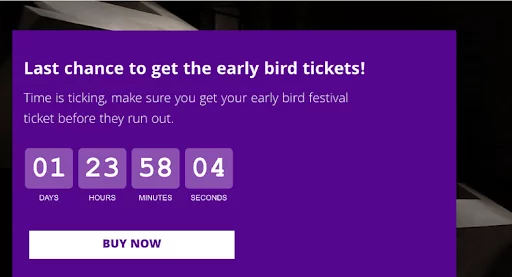
-
Incremental testing
Testing for incremental value is considered the “North Star” of conversion marketing. A marketing initiative’s positive, negative, or indifferent effect on conversion rates can be accurately measured with incremental tests. In an incremental test, you keep half of your visitors on the original version of your site while the other half see a minor tweak.
-
A/B testing
You can’t optimize your conversion rate improvement strategies without conducting A/B tests. E-commerce sites can see a 50% increase in average revenue per unique visitor from A/B testing if the test is successful; this is why 77% of businesses use A/B testing to boost conversion rates.
You can use A/B testing to find out which variant of your website’s experience leads to a higher conversion rate by dividing your traffic in half and presenting each half with a different experience. Frequently tested variations in websites by e-commerce marketers.
- Design
- Placement
- Call to action
- Timing
- Audience
- Product pages
- Blog posts
- Landing pages
- Live chat features
While A/B testing has seen widespread adoption, only 28% of marketers are happy with the results they get from using it to optimize conversion rates. Ensure you pick the right A/B testing tool for your company to avoid dissatisfaction with the results.
12. Take care of the most prevalent CRO problems
Whether your company is just starting with CRO or you’re leading the charge, it’s a good idea to start by correcting any problems visitors may already encounter on your site. This method can assist your company in increasing conversions around your website, just like the last one did. These are some of the most often encountered CRO problems:
- Not putting your CTAs above the fold:
When visitors land on the website, they only see what’s above the fold; anything below it is hidden. Thus, it’s important to put a call to action (CTA) above the fold, whether to keep reading or get in touch with your team.
- Filling your titles and meta descriptions with keywords:
Most of your customers will likely find you through a search engine. Therefore, it is worthy to focus on SEO while designing your site (SEO). But, you might turn off consumers or give them the wrong impression by over-optimizing your title tags and meta descriptions.
- Launching your conversion tracking incorrectly:
Google Analytics is a free tool for analyzing website traffic and user behavior. Google Optimize, one such CRO tool, will even consider your Google Analytics goals and events. That’s why testing your Google Analytics installation for reliability is so important. Take care of these concerns first, and your CRO plan will have a better chance of succeeding.
-
Optimize your campaigns
Customization is an ever-evolving e-commerce marketing strategy that aims to increase conversion rates by responding to users’ preferences and habits. If you want to improve website conversion rates, analyze the results of your conversion marketing tests and then roll out new campaigns.
-
Set best-performing campaigns to 100% of visitors
Following the conclusion of your tests, you can begin rolling out your conversion-boosting campaigns to every visitor to your website. It’s common sense that if you double your audience size, you can make twice as much money by increasing your conversion rate.
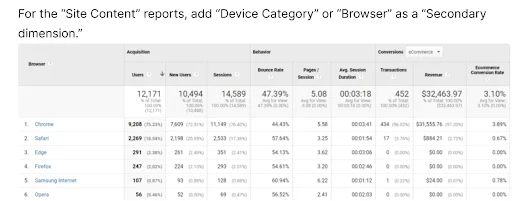
Converting website visitors should be easier than dating!
Conversion rate optimization is unlikely to yield spectacular outcomes. Yet, this has consequences for both your income and sales cycle. Optimization for CRO is not a science that can be applied universally. If you want to see an increase in conversions, you need to figure out what works for your business and implement it through conversion marketing strategies listed above. The key to success is to keep going even when it seems impossible.
FAQs
What is a conversion marketing example?
In marketing, a conversion occurs when a website visitor completes a desired activity, such as joining an email list, downloading a manual or book, or purchasing.
What do conversion marketing techniques aim to achieve?
Conversion marketing strategies aim to raise the proportion of website visitors who complete the targeted activity. This might involve purchasing, using a service, subscribing to a newsletter, or filling out a form. Your website may generate more leads per visitor and increase conversions by optimizing and utilizing powerful CRO tactics.
Are just sales termed as conversions?
No. It’s a typical misunderstanding. Sales are just one type of conversion. In addition to purchases, the following prospective conversions are worth monitoring:
- sending a form
- conversing with a representative or chatbot online
- registering for newsletters or publications
- Calling the company
- Obtaining a free manual or resource
Conversions aren’t only limited to purchases, as you can see. To go closer to your final objective of generating a purchase, you may set up conversions on your website, such as encouraging visitors to phone your company.
Why is improving conversion rates crucial for the business?
Every firm has a set of objectives it wishes to achieve for its clients or website visitors. The quantity of conversions a digital marketing campaign generates serves as a gauge of its effectiveness. The ultimate conversion goal is to turn a prospect into a paying client, but there are additional smaller micro-conversion targets that marketing teams aim to hit. No matter how big a company’s goal is, CRO ticks all these boxes.

